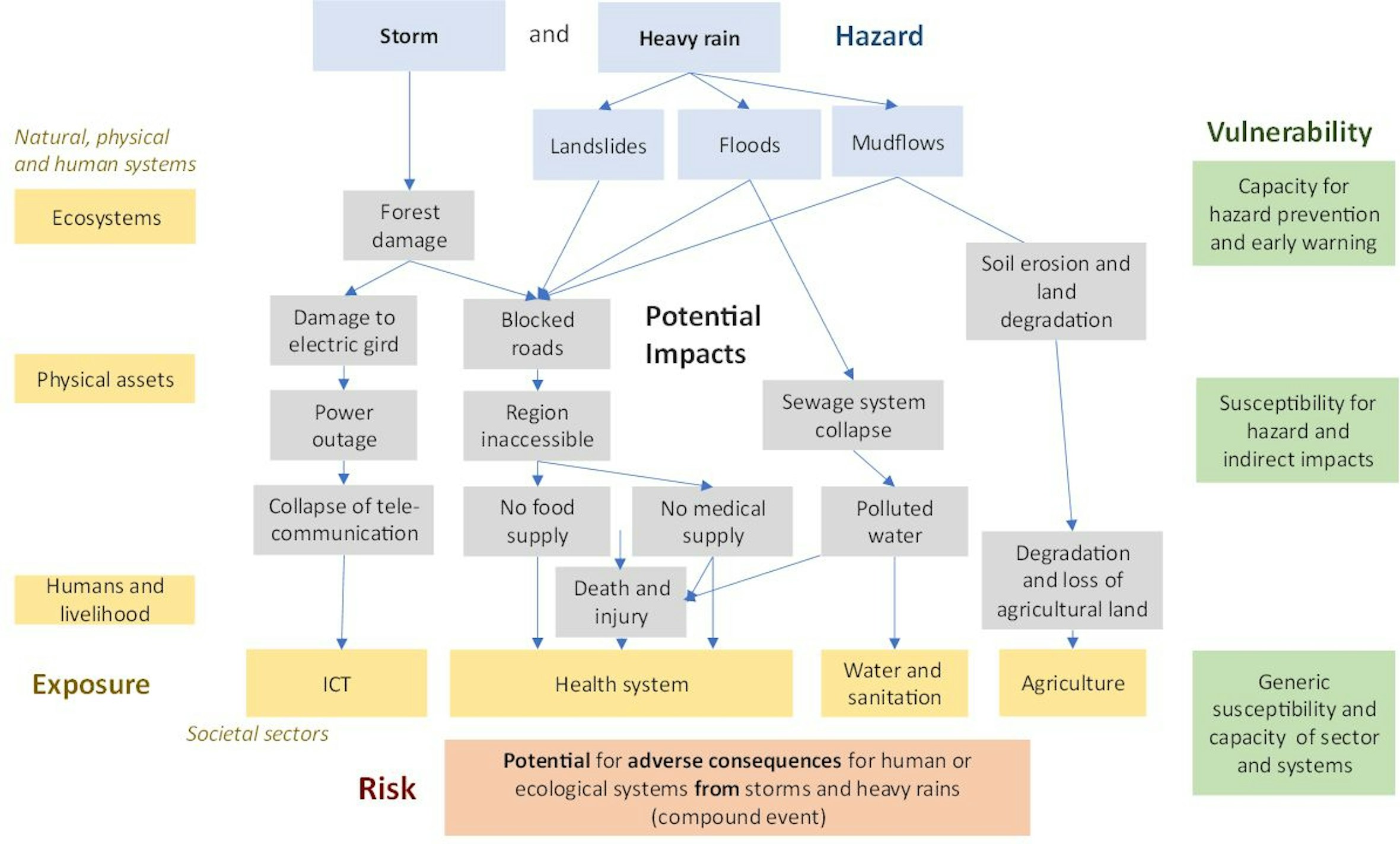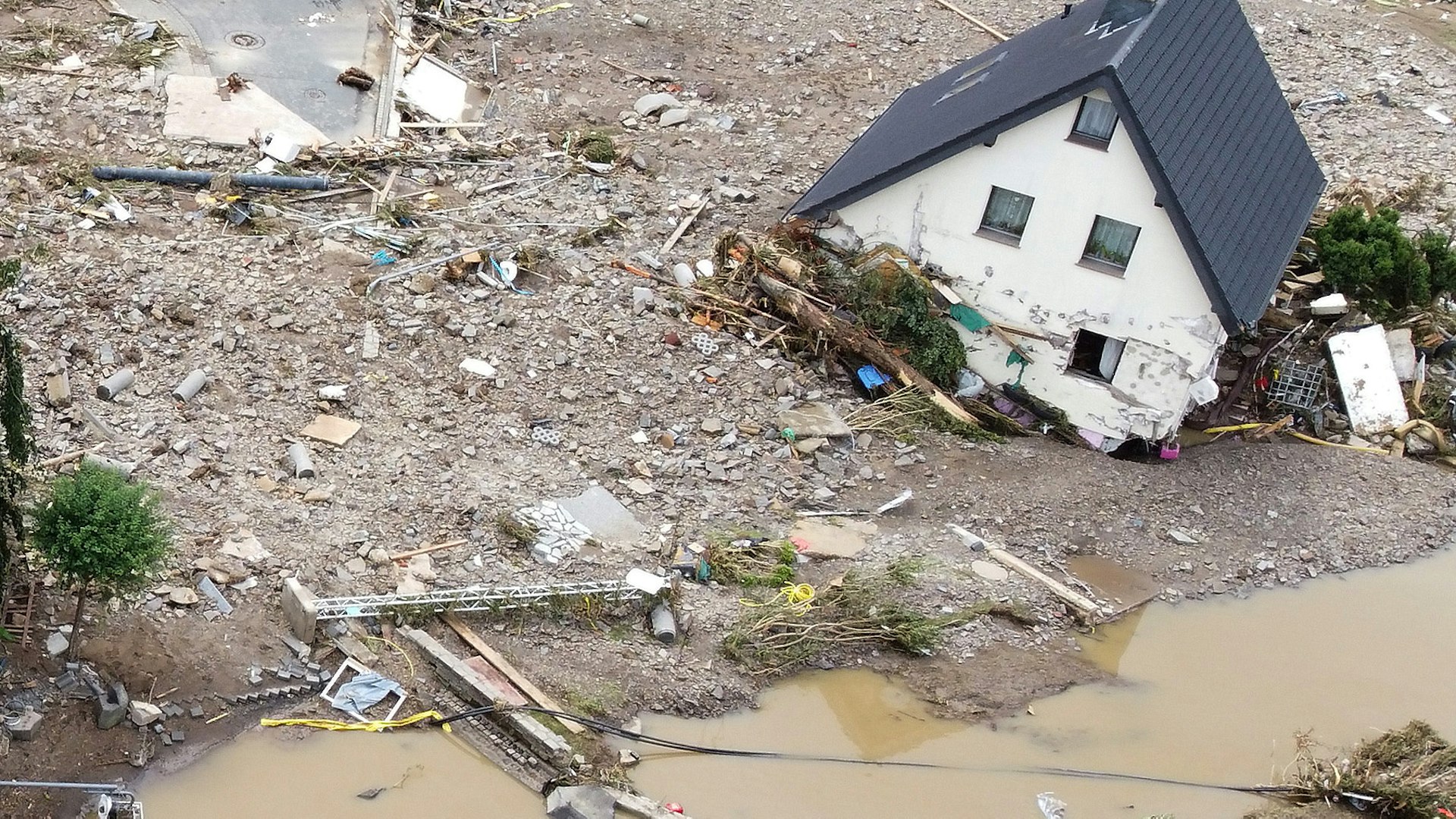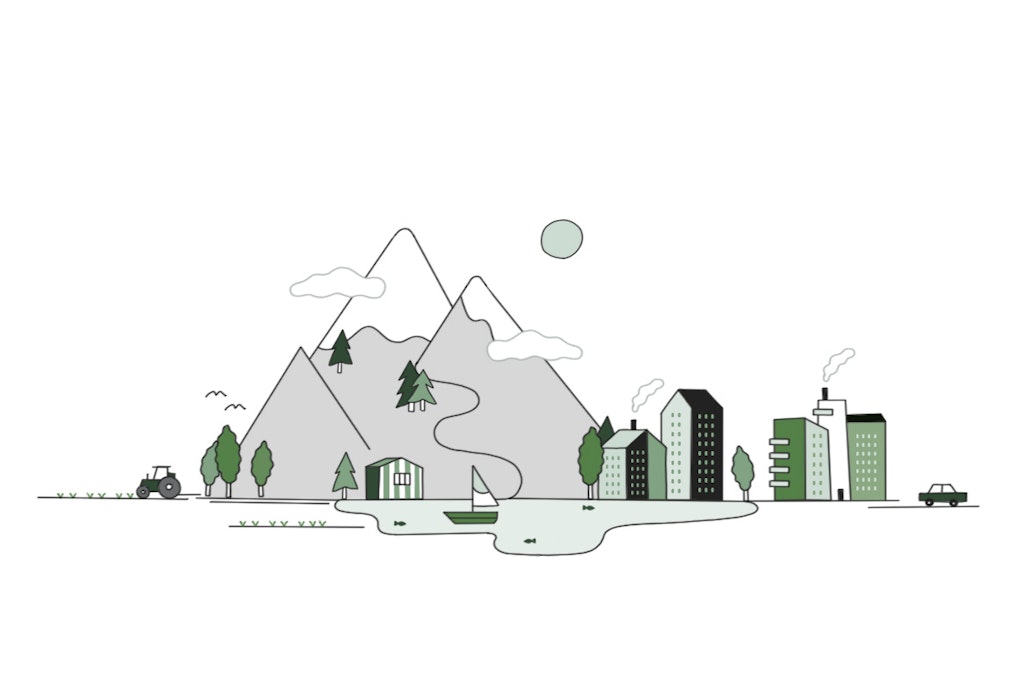magazine_ Interview
The end of predictability
Predicting climate-related hazards has become more complex than ever due to climate change. A team of experts from Eurac Research have recently published an official guide for comprehensive risk assessment in the context of climate change on behalf of the UN.
Catastrophic flood: The flood in western Germany in the summer of 2021 demonstrated that climate-related hazards are also becoming more severe and complex in Europe. In the village of Schuld, entire houses were washed away.
The United Nations Office for Disaster Risk Reduction (UNDRR) has calculated that between 1998 and 2017, extreme weather events killed more than 553,000 people, causing damages in excess of €1.9 trillion. Due to climate change, hazardous events are becoming more frequent and severe, lasting longer and triggering complex risk cascades. The UNDRR has just published official guidance written by climate impact researcher Marc Zebisch and his team on formulating more comprehensive, systemic hazard analysis.
How did this assignment come about?
Marc Zebisch:UNDDR, and UNFCCC, the UN department that deals with climate change, jointly called for such guidance because they realized that in the current situation, they would have to intertwine their previously separate worlds more closely: more and more disasters are directly or indirectly related to climate change, the risks are becoming more complex, and the previous approach to risk assessment was no longer working.
In what sense?
Zebisch: Up to now, when dealing with natural hazards, stable statistics have always been assumed. Let’s look at the management of flood risks: the basis for planning is that this is an extreme event that occurs with a very low probability - for example, only once every 100, 200 or 300 years. Protective measures are geared to this probability.
It is less and less sufficient to prepare for individual hazards, because the tendency now is for several hazards to occur together.
Marc Zebisch
In other words, past events were used as a guide to prepare for the future. With climate change, this no longer works, flood events are becoming more intense and natural hazards can no longer be treated with stable statistics. Moreover, we see that it is less and less sufficient to prepare for individual hazards, because the tendency now is for several hazards to occur together, resulting in increasingly complex chains. This has in a way always been the case - heavy rain, for example, often triggers floods and landslides - but it is becoming much more extreme due to climate change. One example was the South Tyrolean storm Vaia, for which no one was prepared.
What exactly happened there?
Zebisch: There was the heavy rain and people were ready for it, the fire brigade was prepared for the fact that mountain streams would burst their banks. However, such water masses trigger landslides and mud floods, and the like. The storm, although actually predictable, was not expected, there was no warning mechanism. 6000 hectares of forest were destroyed. Such events can have far-reaching consequences causing trees to block roads, isolating villages, or trees fall on electricity pylons, electricity fails, the mobile phone network is interrupted ... This then proceeds in cascades, which is why we speak of cascade risks. The flood disaster in Germany was also a case like this: the great warning apps didn't work because the mobile phone network broke down, hospitals to which injured people were supposed to be taken had to be evacuated because they were also threatened by the floods, the floods caused the canal system to overflow, which contaminated the drinking water.

Cascades of danger: At the beginning there are storms and heavy rain which lead to system threatening consequences. For a comprehensive risk analysis, complex interrelationships and interactions are presented in impact chains.
These are increasingly complex risks that arise from a concatenation of hazards, vulnerability, and exposure, and must be understood as systemic risks - in extreme cases, systems can collapse. In our method of risk analysis, we present the multitude of interconnections and interrelationships in chains of effects - this makes it very clear which factors influence the risk and in what way.
How can you predict the unpredictable? Once you spoke about a climate risk analysis in Tajikistan, where you discovered the banking system was a considerable problem. People did not trust the banks and instead invested their savings in goats, which is why far too many animals strained the meagre pastures, leading to erosion …
Zebisch: When dealing with natural risks, scientists have long recognized how important it is to look at the whole system and to include social and political factors as well as ecological ones. Climate change, however, has made this even more urgent.
I always compare such risk analyses with the work of a doctor: in order to develop a therapy, you have to make as accurate a diagnosis as possible.
Marc Zebisch
In this light, the newly published guideline strives for a comprehensive and systemic method, a large variety of elements are included. Existing decision-making mechanisms and governance principles are central. A risk assessment does not take place in a vacuum, it deals with a very specific reality, with specific values, goals, norms. So as a result, you should be able to say to a regional administration: these risks threaten your area, and in order to be able to deal with them, you have to modify such and such existing rule or procedure in the following way. I always compare such risk analyses with the work of a doctor: in order to develop a therapy, you have to make as accurate a diagnosis as possible, and this includes the patient's history.
Guidelines aside - what are the challenges of practical implementation?
Zebisch: In developed countries, it is probably the separation of the "disaster management" and "climate adaptation" systems that pervades all levels, both with their own established procedures and norms. Breaking this up is very complicated. In developing countries, on the other hand, you have to build up the systems first, which has the advantage that you can intertwine both aspects at the same time. Another challenge is that hazard management has so far been very data-driven, based on statistics and probabilities of recurrence. In view of the complexity that climate change has brought, working with numbers alone has become impossible. Decisions are no longer simply the result of calculations. Dealing with such complex risks also requires approaches like in social policy, whereby you have to integrate a lot of qualitative, narrative information, taking into account vulnerable groups, economic sectors and so on.
So, a change in thinking is required in risk management?
Zebisch: Absolutely, it's about thinking more systemically - and saying goodbye to the idea of predictability.






